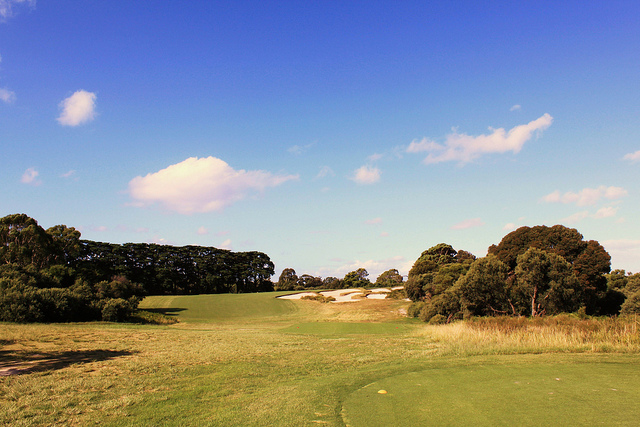If you would analyze every round you play, stroke by stroke, I would bet you give away two strokes per side for no good reason. It doesn’t have anything to with how well you hit the ball, but with how well you play the game.
Recovery shots off the tee shot – if your course has heavy rough or lots of trees, you can waste several shots per round just chipping the ball back into the fairway. If you play a tight course, leave your driver home. What you give up in distance is more than offset by keeping the ball in play.
Trying to get it all back with one shot – Say you dumped your drive in a fairway bunker. The green is in sight, but you have to hit a clean shot to get it there. Better to hit out with a shorter club to up near the green, which is an easier shot, so a good chip can give you a par putt. Playing from a hazard as if you were playing from the fairway invites a large score unless you know the shot well.
Playing over water – Bad things happen when you play over water if you don’t have to. Figure the longest club in your bag that you’re sure you can get in the air. If you have to hit a longer club than that to clear the hazard, go around or lay up, unless the course gives you no other option.
Hitting your driver too often – go the the range and set yourself up in a spot where there are landmarks in the distance that mark about a 40-yard-wide fairway. Get warmed up with a short iron, then hit a drive into your “fairway.” Take your time, hit one driver, and a few short irons before the next drive. If you got fewer than seven drivers inside the boundaries you picked out, your driver is costing you strokes.
Hitting when you’re not ready – You have to feel that the shot you’re about to hit can only have the best possible outcome. The thrill of anticipation must cover you. If you feel anything about this shot that is off, like something is different, but you don’t know what it is, that’s the little voice telling you to step away because you’re not set up to hit a good shot. Listen to that little voice, for if you don’t, you will find yourself saying in about four seconds, “I knew I wasn’t ready. Why didn’t I step away?”
Playing with the distance you want, not the distance you have – It is true that golf is a distance game. The longer you can hit the ball the easier it is to play well, but you only have the distance you have. That’s the distance to play with. If 155 yards with a 6-iron is a good shot for you, and you’re 153 yards from the pin, don’t hit six! Take out the five and put a smooth swing on the ball. With the six, you’re thinking that you have to hit it just right. The extra club in your hand takes the pressure off and you’ll hit a better shot. Use the right club to get the distance you need, not your swing.
Two short shots in a row – At the professional level, the short shot takes the place of the approach putt. At the amateur level, the short shot is meant to get the ball on the green. Getting the ball close to the pin is a secondary consideration. Whatever it takes, get your first short shot on the green, two-putt close at least. That fourth shot you have to take because your first short shot didn’t get on really hurts.
Not aiming your greenside chips – When the ball is close enough to the green that you truly can give it a run at the hole, aim yourself first. Stand behind the ball to find the line on the ground from the pin to your ball. Align yourself to this line and play away. This avoids hitting your chip hole-high but four feet to the left. If you had taken the time to align the shot, you could have had a tap-in or given the ball a chance to go in.
Ignoring contours around the hole – These are the ones to pay attention to. Where will the ball go when it gets six feet from the hole? When the ball gets that near to the hole, it won’t be rolling very fast, and will thus be greatly influenced by contours.
Visit www.therecreationalgolfer.com.




